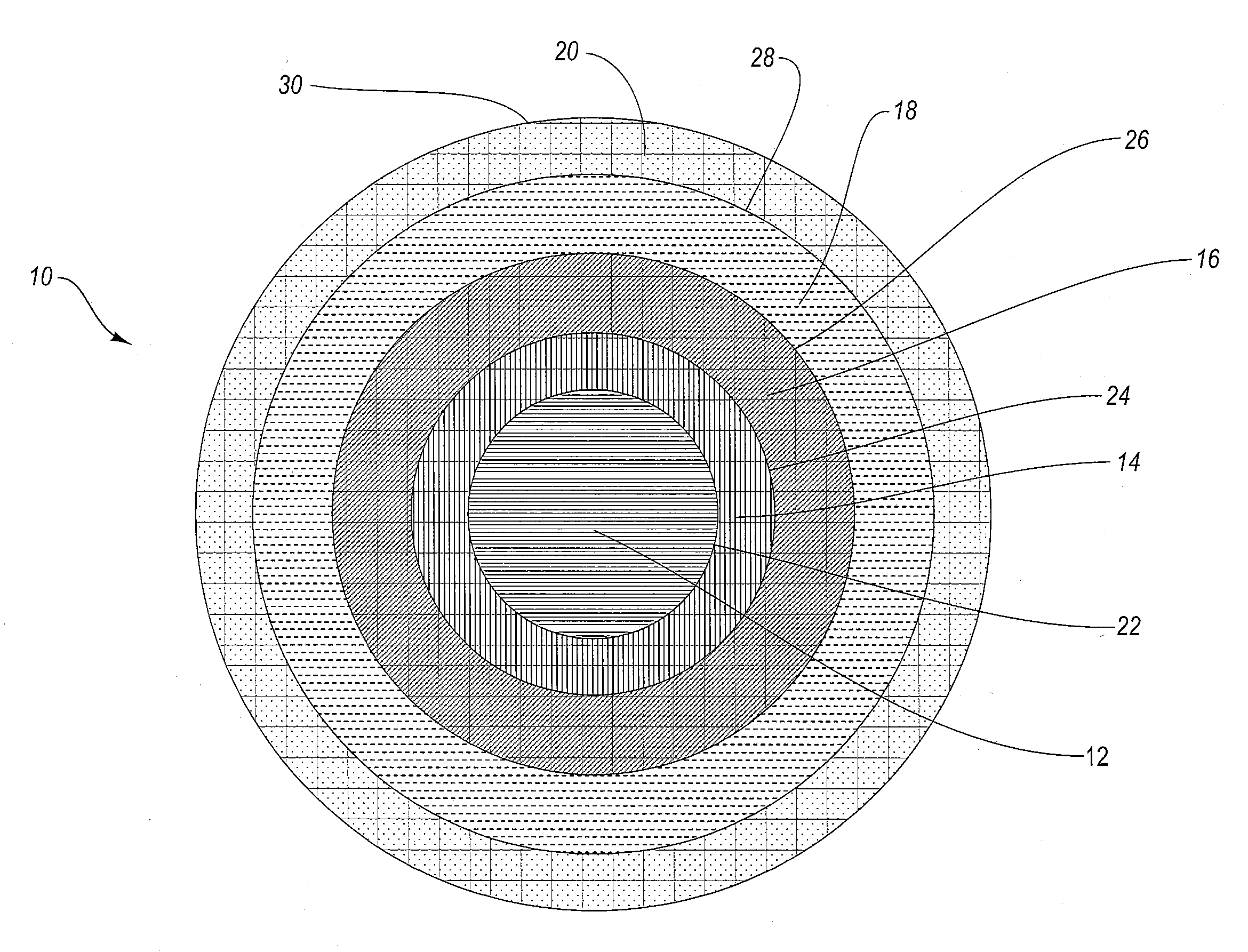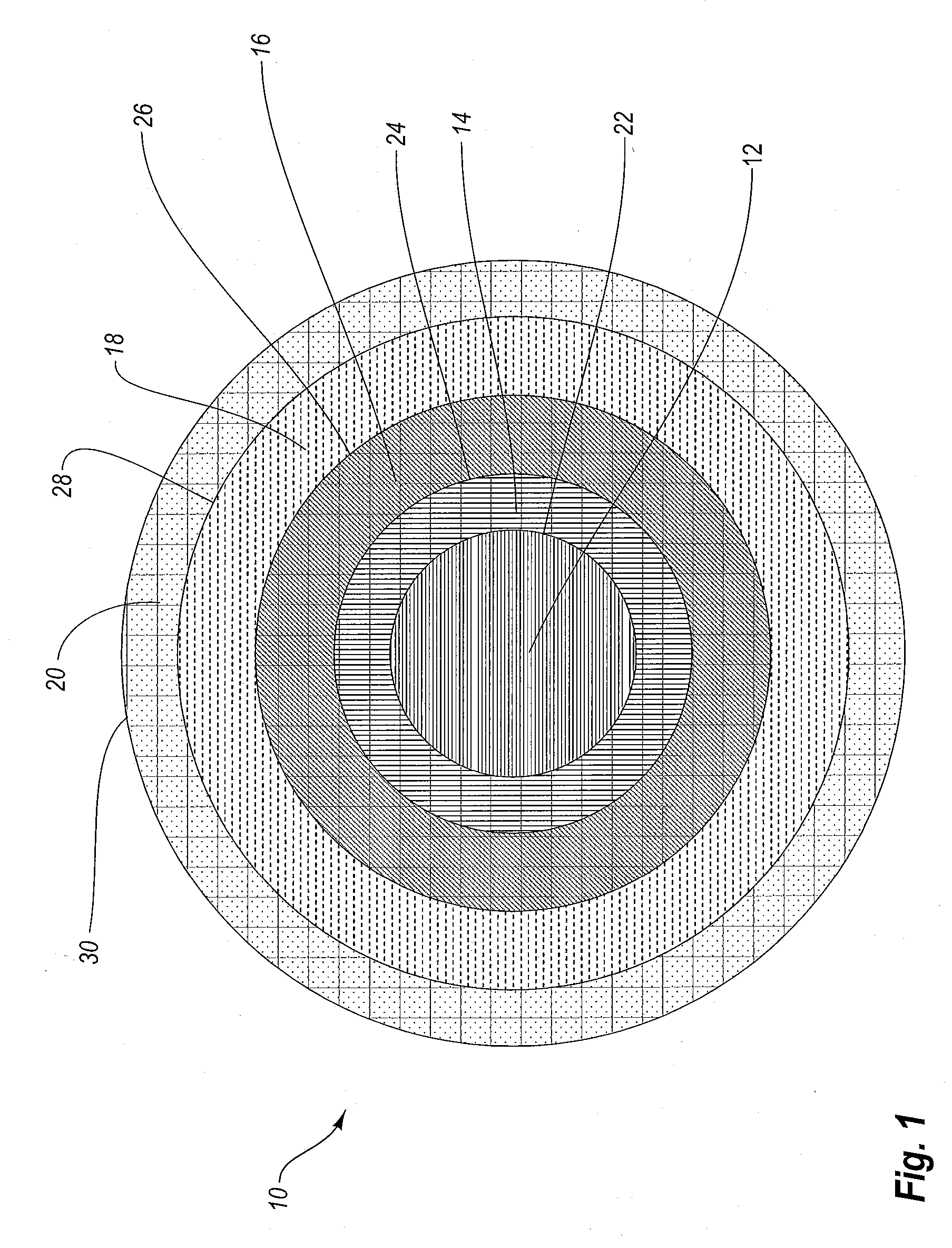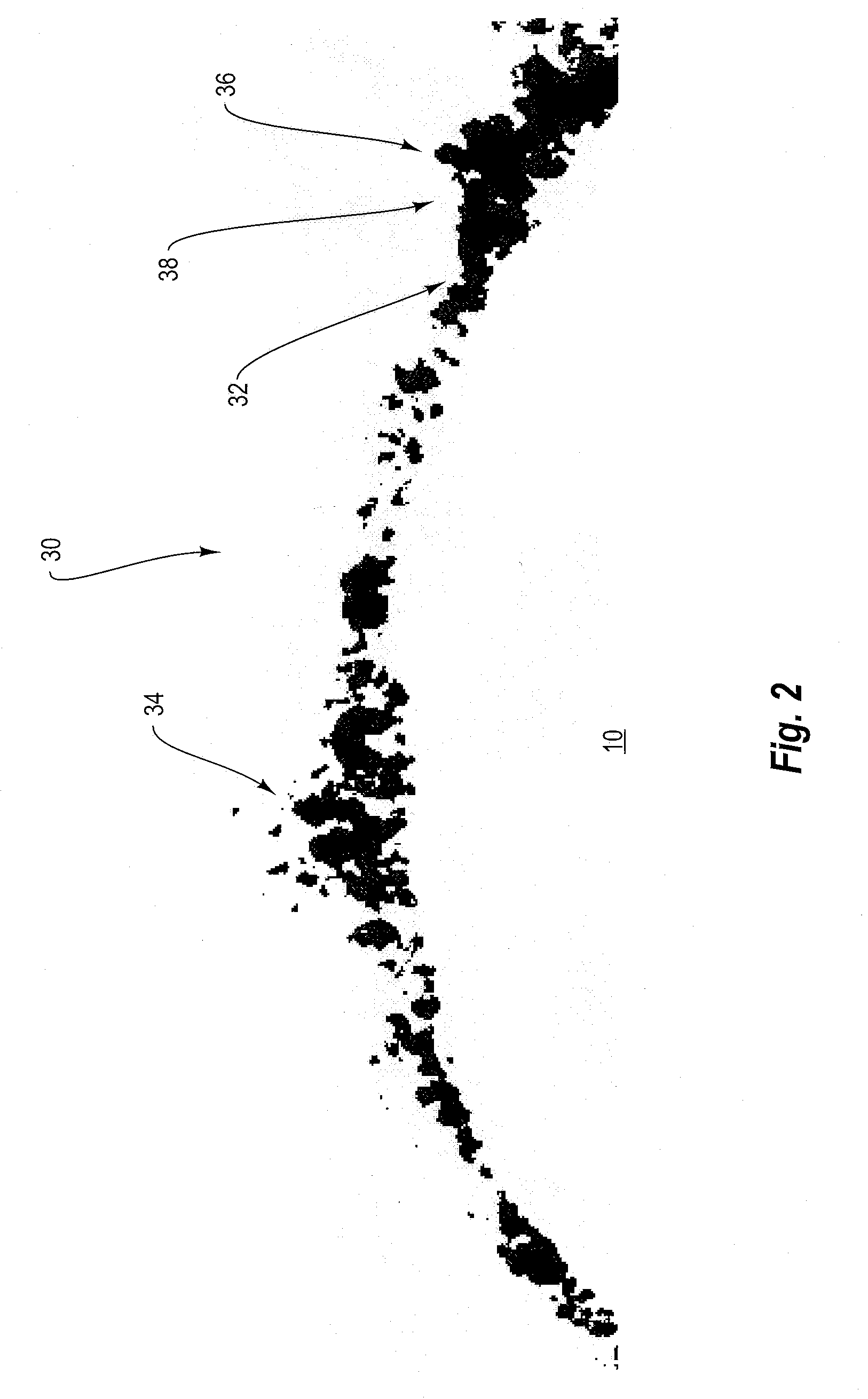Magnetically-responsive microparticles with improved response times
- Summary
- Abstract
- Description
- Claims
- Application Information
AI Technical Summary
Benefits of technology
Problems solved by technology
Method used
Image
Examples
example 1
[0102] Approximately 549.0 grams (“g”) of 5.2% ferrofluid (e.g., 28.5 g solids), prepared according to U.S. Pat. No. 5,648,124, and about 192.0 g of 10% ion-exchanged cleaned 0.8 micron carboxylate modified polystyrene microparticles (e.g., 20.0 g solids) are added to a blender and mixed at low speed for approximately one minute. About 200 milliliters (“mL”) of 2 molar (“M”) NaCl is added at a rate of about 180 mL / min while blending. The mixture is blended at low speed for another minute after the complete addition of NaCl, and then 100 mL of 0.22 mcm filtered 10% (w / w) PEI (e.g., average M.W. 50,000-60,000) is added at the rate of about 180 mL / min with continuous blending. The mixture is blended for an additional minute at low speed, whereupon the mixture is magnetically decanted and re-suspended in 1 L of 0.25 M NaCl. The steps of magnetically decanting and re-suspension in NaCl are repeated three more times.
[0103] The PEI coated microparticles are added to the blender once again...
example 2
[0106] Approximately 400 g (e.g., 5% solids) of the resulting MGCM microparticles from Example 1 and about 549 g of 5.2% ferrofluid (e.g., 28.5 g solids) are added to a blender and mixed at low speed for approximately one minute. About 200 mL of 2 M NaCl is added at a rate of about 180 mL / min while blending. The mixture is blended at low speed for another minute after the complete addition of NaCl, and then 100 mL of 0.22 micron filtered 10% (w / w) PEI (e.g., average M.W. 50,000-60,000) is added at the rate of about 180 mL / min with continuous blending. The mixture is blended for an additional minute at low speed, whereupon the mixture is magnetically decanted and re-suspended in 1 L of 0.25 M NaCl. The steps of magnetically decanting and re-suspension in NaCl are repeated three more times.
[0107] The microparticles are returned to the blender and blended for about one minute at low speed. Then, approximately 100 mL of 10% PMAA is added at the rate of about 180 mL / min with continuous ...
example 3
[0110] Magnetic response time tests are used to evaluate the MRPs comprising two or more MRLs, produced according to Example 1, versus the microparticles comprising a single layer of MRM, produced according to methods described in Example 15 of U.S. Pat. No. 5,648,124. Accordingly, particles having multiple MRLs are designated as MRPs, and those with a single layer are designated as '124 particles.
[0111] To perform the response time test, a 0.05% solids suspension is prepared for each type of the microparticles, and the suspension is added to a spectrophotometer cell. Absorbance at 600 nm is monitored while the suspension is exposed to a magnet mounted on one side of the cell. The response time is measured as the number of seconds required for the absorbance to be reduced by 95% of the absorbance value at time-zero. The results are as follows: magnetic response time for '124 particles with single MRM layer are about 109 seconds; and magnetic response time for MRPs with two MRM laye...
PUM
| Property | Measurement | Unit |
|---|---|---|
| Fraction | aaaaa | aaaaa |
| Mass | aaaaa | aaaaa |
| Mass | aaaaa | aaaaa |
Abstract
Description
Claims
Application Information
 Login to View More
Login to View More - R&D
- Intellectual Property
- Life Sciences
- Materials
- Tech Scout
- Unparalleled Data Quality
- Higher Quality Content
- 60% Fewer Hallucinations
Browse by: Latest US Patents, China's latest patents, Technical Efficacy Thesaurus, Application Domain, Technology Topic, Popular Technical Reports.
© 2025 PatSnap. All rights reserved.Legal|Privacy policy|Modern Slavery Act Transparency Statement|Sitemap|About US| Contact US: help@patsnap.com



